#navarathri festival
Text
Meenakshi Temple

Main Gate of Meenakshi temple, Madurai
The Meenakshi Temple (Arulmigu Meenakshi Sundaraswarar Temple) is an historic Hindu temple located on the southern bank of the Vaigai River in the temple city of Madurai, Tamil Nadu, India. It is dedicated to the goddess Meenakshi, a form of Shakti, and her consort, Sundareshwarar, a form of Shiva.

An aerial view of the compound from the top of the southern gopuram, looking north.
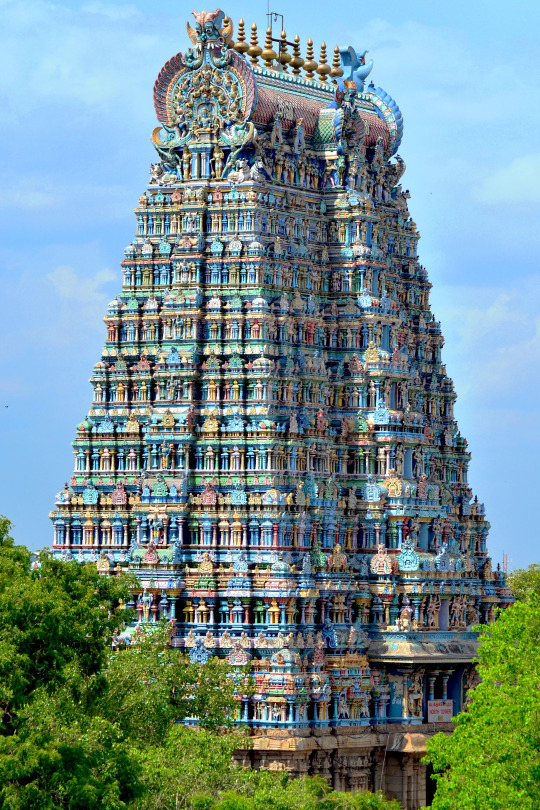
The north tower of the temple

Meenakshi temple has 14 colourful gopura (entrance towers). These are gateways to various shrines and mandapas.

The Airakkal Mandapa (Thousand Pillars Hall) of the Great Pagoda

Carved pillar - Female Musician playing an alapini vina or Kinnari vina in the Thousand Pillars Hall
The massive temple is enclosed by high walls entered through soaring gopuras, or gateway towers. Inside are colonnades, columned mandapas (halls, some of which were used for shops, storerooms, and stables), a sacred tank, lesser shrines, and, at the centre, the two main shrines to Sundareswarar and Meenakshi. The gopuras are some of the most elaborately decorated in India. Brightly painted, they are completely covered with figures of divinities, celestial beings, monster masks, guardians, and animal mounts. The tallest of the 14, the southern gopura, rises to more than 170 feet

View of the temple from the west-side tower
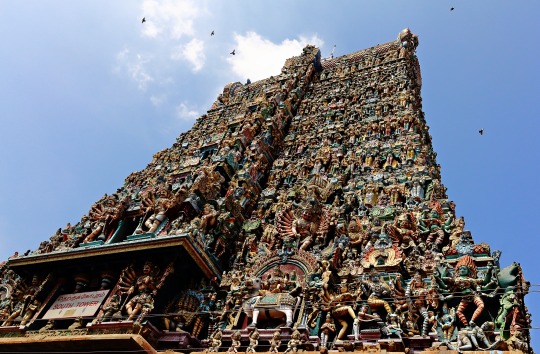
Looking up at the South Tower

Meenakshi Temple

Vishnu (left) gives away his sister and bride Meenakshi's hand into the waiting hand of groom Shiva. The temple commemorates this legend every year with a festive procession.

Thousand-Pillared Hall, 16th century

Another view...
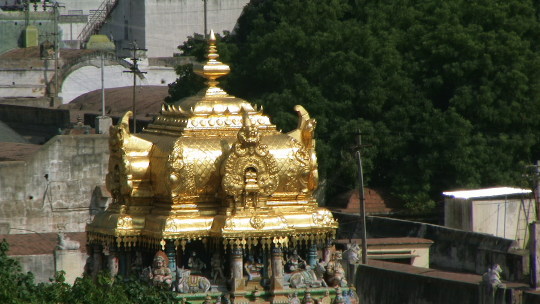
Golden tower (shikhara) of the Madurai Meenakshi temple
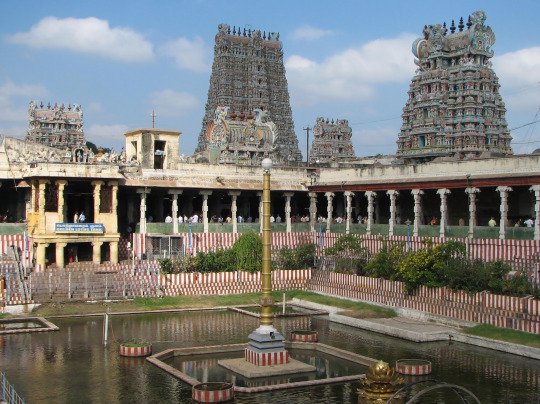
The Meenakshi from behind the Temple Pool

Golden Lotus in the temple pool.
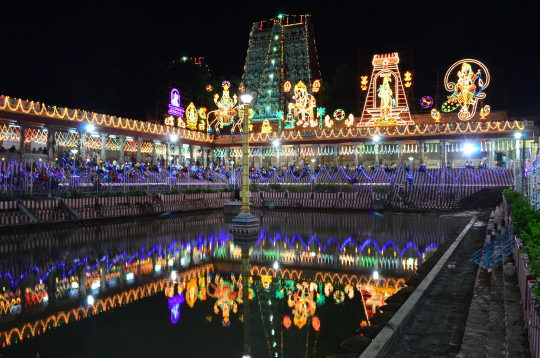
Meenakshi temple decorated for the Navarathri festival.
Navaratri is an annual Hindu festival observed in honor of the goddess Durga, an aspect of Adi Parashakti, the supreme goddess. It spans over nine nights and ten days

Temple at Madura photographed in 1860 by Francis Frith
#The Meenakshi Temple#navarathri festival#Durga#Airakkal Mandapa#thousand-pillared hall#gopura#1000 pillars hall#thousand pillars hall#Arulmigu Meenakshi Sundaraswarar Temple
281 notes
·
View notes
Text
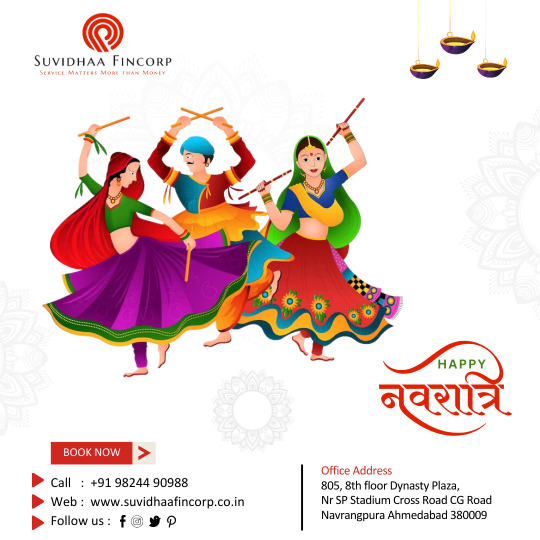
May the choicest blessings of Maa Durga bring happiness, peace, good health, wealth, prosperity and harmony to your life. Shubh Navratri!
#suvidhafincorp#navaratri#navratri#durgapuja#durga#love#india#traditional#festival#navratrispecial#devi#navarathiri#rangolidesigns#indianart#navaratrispecial#navarathiricelebration#navarathri#dasara#navarathirifestival#aadicelebration#margazhidesigns#aadifriday#aadivelli#yezhakolam#kolambymahi#floorart#padikolam#kolamdesign#arisikolam#garba
0 notes
Photo
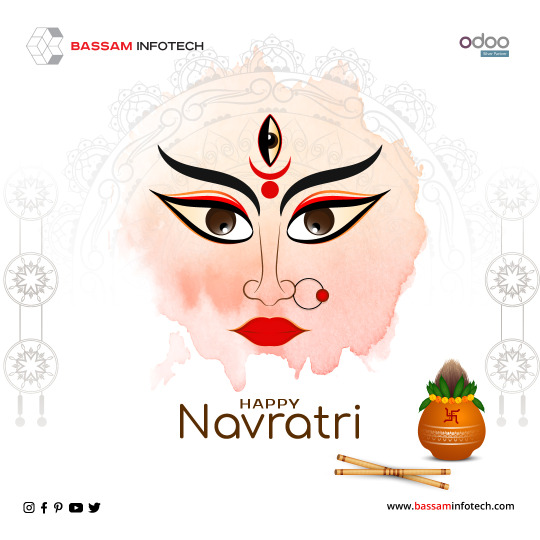
✨✨May you have the best of times, celebrations, and success in life this year. Best wishes for a joyous Navratri, filled with lots of joy, happiness, and peace.✨✨
https://bassaminfotech.com/
#celebrations#navarathri#happynavarathri#festivals#indianfestivals#specialdays#sweets#GoddessDurga#poojahegde
0 notes
Text

May Durga Devi Empower you & Your Family with Her Nine Swaroop of Name, Fame, Health, Wealth, Happiness, Humanity, Education, Bhakti & Shakti.
“Happpy Navaratri To All”
Visit Our Website: https://dracademy.co.in/
#Best NEET Coaching Centres in Bangalore#Best PU college in Bangalore#NEET Coaching#Navarathri#Navaratri2022#Sati Devi#Durga#Navaratri celebration#happy Navratri#navratri2022#Neetcoaching#festival#Bangalore#Hyderabad
0 notes
Photo

May this festive season be full of happiness and health for everyone! Happy Navaratri!
0 notes
Text






Queerness in Indian Media
↳Film: NAVARATHRI (1964, Tamil) dir. A.P. NAGARAJAN / NAVARATRI (1966, Telugu) dir. T. RAMA RAO / NAYA DIN NAI RAAT (1974, Hindi) dir. A. BHIMSINGH
Navarathri follows the story of Nalina (Savitri) who runs away from home. Over the course of the nine nights of Navaratri festival, she encounters nine men (Sivaji Ganesan in a multi-role), each of whom represent one of the Navarasam, or nine human emotions.
On the seventh night she meets an actor, who represents the emotion of Elegance, and his troupe. The actor and his troupe are portrayed as feminine, yet are not villainized--they assist Nalina and even rescue her from a typically male character who attempts to harm her.
On the eighth night, Nalina crossdresses as a man and introduces herself with a male name while meeting with a hunter, which is meant to represent the emotion of Bravery.
The film was remade into Telugu with Savitri reprising her role as protagonist and Akkineni Nageswara Rao as the men, and then in Hindi with Jaya Bhaduri as protagonist and Sanjeev Kumar as the men.
#bollywood#tollywood#kollywood#navarathri#navaratri#naya din nai raat#the acting abilities of these men....absolutely insane#queerness in indian media
96 notes
·
View notes
Text
Navarathri festivities so I couldn’t say this sooner, but 6th chapter of 100% is now out!
check it out here!
16 notes
·
View notes
Photo

Send from Sansgreet Android App. Sanskrit greetings app from team @livesanskrit . It's the first Android app for sending @sanskrit greetings. Download app from https://livesanskrit.com/sansgreet Navarathri. Navaratri is a Hindu festival that spans nine nights (and ten days) and is celebrated every year in the autumn. It is observed for different reasons and celebrated differently in various parts of the Indian cultural sphere. Theoretically, there are four seasonal Navaratri. However, in practice, it is the post-monsoon autumn festival called Sharada Navaratri that is the most observed in the honor of the divine feminine Devi (Durga). The festival is celebrated in the bright half of the Hindu calendar month Ashvin, which typically falls in the Gregorian months of September and October. #sansgreet #sanskritgreetings #greetingsinsanskrit #sanskritquotes #sanskritthoughts #emergingsanskrit #sanskrittrends #trendsinsanskrit #livesanskrit #sanskritlanguage #sanskritlove #sanskritdailyquotes #sanskritdailythoughts #sanskrit #samskrit #resanskrit #navaratri #celebratingsanskrit #navaratri #navaratri2022 #navaratriutsav #durgashtami #mahanavami #vijayadasami #durgapooja #durgapooja2022 #devi #navadurga https://www.instagram.com/p/CjJKoUQrNL_/?igshid=NGJjMDIxMWI=
#sansgreet#sanskritgreetings#greetingsinsanskrit#sanskritquotes#sanskritthoughts#emergingsanskrit#sanskrittrends#trendsinsanskrit#livesanskrit#sanskritlanguage#sanskritlove#sanskritdailyquotes#sanskritdailythoughts#sanskrit#samskrit#resanskrit#navaratri#celebratingsanskrit#navaratri2022#navaratriutsav#durgashtami#mahanavami#vijayadasami#durgapooja#durgapooja2022#devi#navadurga
10 notes
·
View notes
Text
Wholesale Gift Hampers: Perfect Choices for Every Occasion
Wholesale gift hampers are versatile and thoughtful options for various occasions, offering a curated selection of items that cater to different tastes and preferences. Whether it's a corporate event, a wedding celebration, a birthday party, or a festive gathering, wholesale gift hampers provide a convenient and delightful gifting solution. Here's why they are a popular choice and some ideas to consider:

Benefits of Wholesale Gift Hampers:
Convenience and Variety:
Wholesale Gift Hampers come pre-packaged with an assortment of items, saving you time and effort.
They offer a variety of products in one package, catering to different preferences and tastes.
Cost-Effective Option:
Buying in bulk from wholesale suppliers often offers cost savings per item.
Ideal for businesses or event planners looking to provide gifts in larger quantities.
Impressive Presentation:
Gift hampers are beautifully presented, making them visually appealing and ready for gifting.
They can be customized with personalized messages or branding for corporate events.
Ideas for Wholesale Gift Hampers:
Gourmet Food and Beverage Hampers:
Assorted cheeses, crackers, gourmet chocolates, and cookies.
Premium teas, coffees, artisanal jams, and honey.
Wine or champagne paired with gourmet snacks.
Spa and Wellness Hampers:
Aromatherapy candles, bath salts, and luxurious body lotions.
Herbal teas, relaxation music CDs, and stress-relief accessories.
Yoga mats, meditation guides, and essential oils.
Home and Kitchen Hampers:
Kitchen gadgets, recipe books, and gourmet cooking ingredients.
Decorative tableware, artisanal kitchen towels, and coasters.
Indoor plants, gardening tools, and herb-growing kits.
Personalized and Customized Hampers:
Customized gift hampers with items tailored to the recipient's preferences.
Personalized mugs, photo frames, or engraved items with names or dates.
Monogrammed towels, robes, or accessories for a unique touch.
Seasonal and Festive Hampers:
Holiday-themed hampers with festive treats and decorations.
Summer picnic hampers with outdoor essentials like picnic blankets, portable wine glasses, and snacks.
Winter warmth hampers with cozy blankets, hot cocoa mix, and scented candles.
Tips for Choosing Wholesale Gift Hampers:
Consider the Occasion: Tailor the contents to suit the event or celebration.
Know Your Audience: Keep the preferences and tastes of the recipients in mind.
Quality Assurance: Select reputable suppliers to ensure high-quality products.
Packaging and Presentation: Opt for attractive packaging and add-ons like ribbons or personalized tags.
Conclusion:
Wholesale gift hampers offer a convenient and versatile gifting solution for a wide range of occasions. Whether it's a corporate event, wedding, birthday party, or festive celebration, these hampers provide an array of options to suit different tastes and preferences. With thoughtful contents and impressive presentation, wholesale gift hampers make memorable and cherished gifts for both individuals and businesses alike. When planning your next event or gifting occasion, consider the charm and convenience of wholesale gift hampers for a delightful gifting experience.
For more info. visit us:
return gift pack
christmas return gifts
return gifts for navarathri
german silver return gifts in hyderabad
0 notes
Text
Adding Elegance to Your Home: The Tradition of the Front Door Toran
The front door of a home is not just a point of entry; it's a symbol of welcome, a portal to your personal sanctuary, and a reflection of your unique style. In many cultures, a Toran, a decorative and auspicious hanging at the front door, holds deep significance. This article delves into the rich tradition of the Buy Front Door Toran, exploring its history, cultural significance, and the beauty it adds to homes.
A Glimpse into History
The tradition of the Toran can be traced back to ancient India, where it was a common element in the architecture and decor of homes. The word "Toran" is derived from the Sanskrit word "Torana," which means "gateway." Originally, Torans were not just decorative; they served as a symbol of hospitality, prosperity, and positive energy.
Cultural Significance
Torans are more than mere decorations; they hold cultural and spiritual importance in many parts of the world. Here are a few examples:
Indian Subcontinent: In India, Torans are associated with various festivals and occasions. They are believed to bring good luck and ward off negative energy. During Diwali, the Festival of Lights, Torans are hung to welcome Goddess Lakshmi, the deity of wealth and prosperity, into the home.
Bali, Indonesia: Known as "Penjor," decorative bamboo poles are adorned with colorful flowers and coconut leaves. They are prominently displayed during Galungan, a Hindu Balinese holiday, symbolizing the victory of good over evil.
Nepal: In Nepal, Torans known as "Bandanwars" are common during weddings and other celebrations. They are made from fresh marigold flowers and are believed to purify the entryway.
Southern United States: In some regions of the southern United States, a wreath hung on the front door serves a similar purpose, symbolizing hospitality and welcome.
Bringing Beauty and Tradition to Your Home
Front Door Torans are not just a cultural artifact; they are also a beautiful addition to your home decor. Here's how you can incorporate the tradition of the Toran into your living space:
Choose the Right Design: Torans come in a variety of designs, colours, and materials. Whether you prefer intricate embroidery, beading, or simple yet elegant patterns, there's a Toran to match your style.
Festive Decor: Use Torans to celebrate special occasions and festivals. For example, during Navratri in India, you can adorn your front door with a vibrant Toran.
Year-Round Elegance: Torans need not be reserved for special occasions. You can hang a Toran on your front door year-round to bring an artistic and welcoming touch to your home.
Customization: Consider getting a Toran custom-made to match the color scheme and design of your home.
Interior Decor: Torans are not limited to the front door; they can also be used as interior decor pieces, adding charm to your living room, dining area, or bedroom.
Symbol of Unity: In some cultures, Torans symbolize the unity of the family. Consider having a Toran in your living space to represent togetherness and harmony.
Conclusion
The tradition of the Front Door Toran is a beautiful and meaningful way to add elegance to your home. Whether you're celebrating a special occasion, embracing cultural traditions, or simply enhancing the beauty of your living space, a Toran has the power to welcome positivity, luck, and warmth into your home. As you hang a Toran on your front door, you're not just adorning your home; you're connecting with a rich cultural heritage that has transcended time and continues to bring joy to people around the world.
For more details, visit us :
diwali gift ideas for friends
navarathri return gifts
apple candle holder
candle tealights
0 notes
Text
Navarathri means "nine nights". What does the nine signify?

Navarathri means "nine nights". What does the nine signify? There are nine grahas (planets according to Astrology). The human body has nine openings. Although astrologers speak about nine planets, in reality, there are only two "planets" that matter for a sadhaka . They are raaga (attachment) and dwesha (hatred). One must get control on these two Graha's. In the worship of the deities during Navarathri, every day, one of them should be worshipped, not externally but with one's heart and soul. Bodily actions are ephemeral. The body derives its value from the spirit within. Hence it should be regarded as a sacred temple. During the Navarathri festival, for the purpose of eradicating one's demonic tendencies. the deities were worshipped with kumkum (sacred powder). Therefore, the Navarathri festival is observed, by contemplating on God for ten days, cleansing one's self of all impurities, to experience the divinity within.
The penultimate day of the festival is dedicated to what is Termed Aayudha Puja (Worship of weapons). The weapons to be worshipped are the divine powers in man. When the divine is worshipped in this way, one is bound to progress spiritually. The significance of Durga, Lakshmi and Saraswati has to be rightly understood. The three represent three kinds of potencies in man. Ichchaa Shakti, will power, Kriya Shakti, the power of purposeful action, and Jnaana Shakti - the power of discernment. Saraswati is manifest in man as the power of speech, Vaak. Durga is present in the form of dynamism. Lakshmi is manifest in the form of will power. The body indicates Kriya Shakti. The mind is the repository of Ichchaa Shakti. The Atma is Jnaana Shakti. Kriya Shakti comes from the body, which is material. The power that activates the body that is inert and makes it vibrant is Ichchaa Shakti. The power that induces the vibrations of Ichchaa Shakti is Jnaana Shakti, which causes radiation of energy. These three potencies are represented by the mantra: Om Bhur Bhuvah Suvaha. Bhur represents Bhuloka, the earth. Bhuvah represents the life force, conscience in man. Suvaha represents the power of radiation.
All three are present in man. Thus Durga, Lakshmi and Saraswati dwell in the human heart. During the ten days of the Dasara, the Rakshasas (demons) in the form of wicked qualities have been routed. Rakshasas do not mean demonic beings. The bad qualities in men are the demons. Arrogance is a demon. Bad thoughts are demons. Ravana is depicted as the king of Rakshasas. He is said to have ten heads. He was not born with ten heads. Who is this Ravana and what are his ten heads? Kama (lust), Krodha (anger), Moha (delusion), Lobha (Greed), Mada (pride), Maatsarya (Envy), Manas (the mind), Buddhi (intellect), Chitta (Will) and Ahamkara (the Ego) - these ten constitute the ten heads. Ravana is one who has these ten qualities. Each one can decide for himself whether he is a Ravana or a Rama according to his qualities. Gayatri, Savitri and Sarasvati are present in every man, but he is not able to understand and experience their presence. Consequently, he is giving room to wicked qualities and indulging in evil deeds, thereby ruining his life. His bad habits are responsible for his downfall. First of all, man has to develop good habits and transform himself. When you develop divine feelings, nothing is impossible for you. Any mighty task can be accomplished through pure and selfless love.
navaratri is dedicated to Maha Durga, Maha Kali and Maha Lakshmi. These three deities are not different but one and the same. They are the forms of energy. Saraswati is the presiding deity of speech. Lakshmi is the form of Ananda. All three are present in every man. We do not have to search for them elsewhere. Man is Divine, humanity is Divinity. Consider man as Divine and the body as Temple of Divinity, enjoy the bliss of God.
WISH YOU ALL A HAPPY VIJAYADASAMI...
Jyothirmayi.
#prasad bharadwaj#జ్ఞానవాహిని#Spiritual#Bhakthi#Insight#సందేశాలు#Devi Navaratri#Jnanavahini#message of the day
0 notes
Text
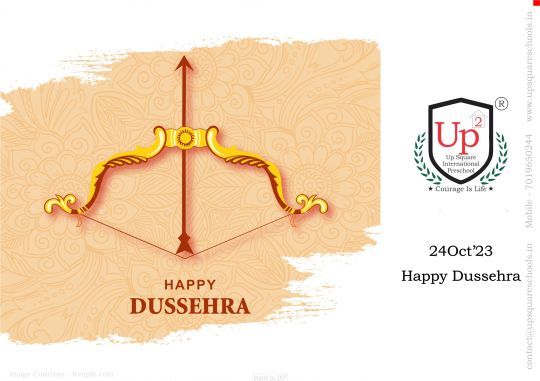
Best Preschool in Electronic City
UP Square International Preschool
www.upsquareschools.in
Subject - Dussehra Celebration
Dussehra also known as Vijayadashami is a major Hindu festival celebrated at the end of Navarathri every year. Dussehra signifies the victory of lord Rama over King Ravana, Goddess Durga over Mahishasura.
Navarathri is celebrated for 9 days, "Nava" meaning nine and "rathri" meaning nights. During these nine nights , nine forms of Goddess Devi are worshiped.
In Karnataka, Dussehra is one of the biggest and prominent festival in Mysore. The Mysore palace is illuminated with lights. The idol of Goddess Chamundeshwari is kept inside a golden mantap and also taken for a procession on an elephant.
In South India, "Golu" (array of dolls made of mud, clay etc) is arranged in many homes and temples.
With Best Regards,
UP Square.
0 notes
Text
Dolls of Devotion: Navratri Golu's Enchanting Charms | Zishta
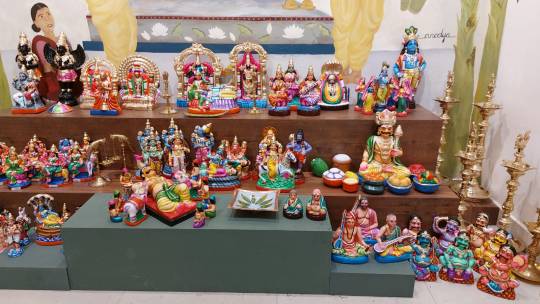
The History Behind Golu During Navaratri
"Golu" is a term commonly used in South India, particularly in the Tamil Nadu state, to refer to the display of dolls and figurines during the festival of Navaratri (also spelled as Navarathri or Navaratri), which is a Hindu festival dedicated to the worship of the goddess Durga. The term "Golu" is derived from the Tamil word "kolu," which means "assembly" or "arrangement." The tradition of displaying dolls and figurines during Navaratri has deep cultural and religious significance, and it has been a part of South Indian culture for many generations.
Here's a brief overview of the history behind the Golu tradition:
Religious Significance: Navaratri is a festival that spans nine nights and is dedicated to the worship of various forms of the goddess Durga. Each night is associated with a different form of the goddess, and the festival celebrates the victory of good over evil. The Golu display is set up in homes to depict various scenes from Hindu mythology and stories related to the goddess.
Ancient Origins: The practice of arranging dolls and figurines for Navaratri has its roots in ancient Indian rituals and customs. It is believed that people used to create makeshift stages or platforms and place idols and figurines of deities on them for worship during this festival.
Royal Patronage: The Golu tradition was also patronized by various rulers and kings in South India throughout history. They would often set up elaborate displays of dolls and figurines in their palaces and courts during Navaratri as a way to showcase their wealth and devotion to the goddess.
Community and Social Bonding: Golu is not only a religious practice but also a social and community-centered tradition. Families and neighbours visit each other's homes to view the Golu displays, exchange sweets and gifts, and celebrate the festival together. It promotes a sense of unity and camaraderie within the community.
Evolution of Displays: Over the years, the Golu displays have become more intricate and elaborate. They often include a wide range of dolls and figurines, depicting not only religious scenes but also cultural, social, and contemporary themes. People put a lot of creativity into designing their displays, incorporating modern elements alongside traditional ones.
Cultural Preservation: The Golu tradition plays a role in preserving and passing on cultural and religious stories to younger generations. Parents and elders often explain the significance of each doll and the associated stories to children, helping them connect with their heritage.
In modern times, the Golu tradition has extended beyond Tamil Nadu and is also practiced in other South Indian states like Karnataka, Andhra Pradesh, and Telangana. The way people celebrate Navaratri and set up their Golu displays may vary slightly from region to region, but the underlying reverence for the goddess and the spirit of togetherness remain consistent.
Cultural Significance of Golu
The practice of keeping Golu during the festival of Navaratri in South India has several cultural reasons:
Celebrating Diversity: Golu brings together a diverse array of dolls and figurines, representing various aspects of Indian culture, mythology, and history. This reflects the rich cultural diversity of India and showcases the country's pluralistic traditions.
Storytelling and Education: Golu displays often depict scenes from Hindu mythology, historical events, and everyday life. This serves as a visual and educational tool, allowing parents and elders to share stories and teachings with younger generations, passing on cultural and religious knowledge.
Community Bonding: Golu is a social practice that fosters a sense of community and togetherness. Families and neighbors visit each other's homes to view the displays, exchange greetings, and engage in conversations. This strengthens community ties and promotes harmony.
Artistic Expression: Designing and arranging Golu displays is a creative endeavor. People put thought into selecting dolls, arranging them on different levels, and decorating the display area with vibrant colors and traditional elements. This artistic expression is a way to celebrate creativity and craftsmanship.
Preserving Tradition: Golu is a tradition that has been passed down through generations. By continuing this practice, individuals and families contribute to the preservation of cultural heritage and customs, ensuring that important traditions are not forgotten.
Festival Spirit: Navaratri is a festive season that brings joy and positivity to the community. Golu serves as a central aspect of Navaratri celebrations, creating an atmosphere of festivity and merriment.
Inclusivity: Golu is not limited to depicting only religious scenes. People often incorporate dolls representing different professions, ethnicities, and cultures. This inclusivity promotes the idea of unity in diversity.
Cultural Identity: Golu is a unique cultural practice that sets South India apart. By observing Golu, individuals reaffirm their cultural identity and celebrate their roots.
Social Exchange: During Golu visits, people offer prasad (sacred food) and distribute sweets and gifts to guests. This ritual of giving reinforces the importance of sharing and generosity within the community.
Ritualistic Significance: Golu is set up during Navaratri, a festival dedicated to the goddess Durga. The arrangement of dolls on different tiers symbolizes the hierarchical structure of the universe, with the divine at the top and humans and animals below.
Overall, the cultural reasons for keeping Golu are deeply intertwined with storytelling, community, creativity, education, and the celebration of tradition. It serves as a multi-faceted practice that enriches the cultural fabric of South India and promotes values of unity, diversity, and interconnectedness.
Different Versions of Golu Across India
While the term "Golu" is commonly used in South India, particularly in Tamil Nadu, to refer to the arrangement of dolls and figurines during Navaratri, similar practices of setting up displays of dolls, figurines, and idols exist in various other parts of India as well. However, these practices might go by different names and have regional variations. Here are a few examples:
Bommai Kolu (Tamil Nadu): As previously discussed, Bommai Kolu is the traditional Golu display in Tamil Nadu, featuring tiers of dolls and figurines that represent deities, mythological characters, and everyday life scenes.
Bommala Koluvu (Andhra Pradesh and Telangana): In these states, especially in Telugu-speaking households, Bommala Koluvu is observed during the festival of Navaratri. It involves arranging dolls, idols, and figurines depicting various mythological and cultural scenes on steps or tiers.
Gombe Habba (Karnataka): Gombe Habba is a tradition in Karnataka that involves setting up a display of dolls and figurines during Navaratri. The dolls are arranged on steps or platforms, and the display often includes depictions of deities, mythological scenes, and cultural motifs.
Durga Puja Pandals (West Bengal and other parts of India): Durga Puja is a major festival in West Bengal and is celebrated with grand pandals (temporary structures) where larger-than-life idols of goddess Durga and other deities are displayed. While not exactly like Golu, the concept of setting up elaborate displays of idols during Durga Puja shares similarities with the practice.
Doll Displays during Festivals: Various festivals across India involve the display of dolls and figurines. For instance, during the festival of Vishwakarma Puja in some parts of North India, artisans and craftsmen set up displays of their tools and products. Similarly, during Diwali (Festival of Lights), decorative idols and figurines are often displayed in homes.
Janmashtami Displays: During the festival of Janmashtami, which celebrates the birth of Lord Krishna, scenes from Krishna's life are often depicted using dolls and figurines in many parts of India.
These are just a few examples of the diverse ways in which displays of dolls, figurines, and idols are integrated into various festivals and cultural practices across India. The specific forms and customs might vary based on regional traditions, but the underlying theme of celebrating deities, mythology, and culture through visual representations remains consistent.
Why Golu during Navaratri?
The tradition of setting up Golu displays during Navaratri is closely linked to the religious significance of the festival and the worship of the goddess Durga in her various forms. There are several reasons why Golu is done during Navaratri:
Celebration of Devi's Triumph: Navaratri is a festival that spans nine nights and is dedicated to the worship of different forms of the goddess Durga. Each night is associated with a different form of the goddess, representing her various manifestations and powers. The Golu display allows devotees to depict these different forms and celebrate the victory of good over evil that the goddess represents.
Mythological Importance: According to Hindu mythology, the goddess Durga fought against the demon Mahishasura for nine days and nights, ultimately defeating him on the tenth day, which is celebrated as Vijayadashami or Dussehra. The nine nights leading up to this victory are observed as Navaratri, and the Golu display is a way to honor and commemorate this mythological event.
Display of Divine Energies: The Golu display often includes figurines of various deities, not just Durga, but also representations of other gods and goddesses from Hindu mythology. It is believed that during Navaratri, the divine energies are particularly active and present. The Golu serves as a way to invite these divine energies into the home and create a spiritually charged atmosphere.
Symbolism of Tiers: The Golu display is typically arranged in multiple tiers or steps, with the most revered deities at the top. This tiered arrangement symbolizes the hierarchy of the cosmos, with the divine at the highest level and humans and other beings below. It represents the interconnectedness of all life and the presence of the divine in every aspect of creation.
Cultural Expression: Golu is not only a religious practice but also a way to express cultural creativity. People use the display to showcase their artistic skills by arranging dolls, figurines, and scenes in intricate and creative ways. This allows for cultural expression and the preservation of artistry.
Community Participation: The Golu tradition encourages social interactions and community participation. Families and neighbors visit each other's homes to view the displays, share sweets, and engage in conversations. This fosters a sense of unity and camaraderie within the community.
Overall, Golu during Navaratri is a combination of religious devotion, cultural expression, and community bonding. It allows devotees to honor the goddess Durga and her various forms, celebrate the triumph of good over evil, and create a spiritually uplifting environment in their homes.
What to Display in Different Tiers of the Golu Steps?

The Golu display during Navaratri typically consists of multiple tiers or steps arranged in a pyramidal or staircase-like fashion. Each tier is adorned with a variety of dolls, figurines, and idols, and the arrangement is both visually appealing and symbolically meaningful. The significance of the different steps in Golu and the types of idols that are often included can vary, but here are some general aspects to consider:
Significance of Different Steps:
Kalasam (Top Pot): At the highest point of the Golu, a Kalasam (a decorated pot) is often placed. This represents the divine presence and symbolizes abundance, prosperity, and protection.
Gods and Goddesses: The upper tiers of the Golu usually feature idols of major Hindu deities such as Lord Ganesha, Goddess Saraswati, Goddess Lakshmi, and Lord Vishnu. These deities are revered for their respective qualities and powers—Ganesha for wisdom, Saraswati for knowledge, Lakshmi for wealth, and Vishnu as the preserver.
Mythological Scenes: The middle tiers often depict scenes from Hindu mythology, such as the wedding of Lord Rama and Sita, Krishna's childhood episodes, and other significant events from epics like the Ramayana and Mahabharata.
Saints and Sages: The middle and lower tiers may include figurines representing revered saints, sages, and spiritual teachers. This honors the spiritual lineage and wisdom that has been passed down through generations.
Common Life and Culture: The lower tiers can feature dolls depicting scenes from everyday life, villages, marketplaces, and professions. This represents the importance of harmony between the divine and the mundane aspects of life.
Animals and Nature: Animals and natural elements like rivers, trees, and animals are also commonly included, representing the interconnectedness of all life and the divine presence in every aspect of creation.
Idols That Are Often Included:
Devi Durga: Given that Navaratri is dedicated to the goddess Durga, an idol or image of Devi Durga in her various forms is a key element of the Golu display.
Goddess Saraswati: Saraswati, the goddess of knowledge, arts, and learning, is often placed on a separate platform or alongside books and musical instruments.
Goddess Lakshmi: The goddess of wealth and prosperity, Lakshmi, is another important idol. She is usually placed in the center or upper tiers.
Lord Ganesha: Lord Ganesha, the remover of obstacles, is commonly placed at the beginning of the Golu to invoke his blessings.
Lord Krishna: As a beloved deity, depictions of Lord Krishna, especially scenes from his life, are often included.
Other Deities: Depending on personal preferences and family traditions, idols of other deities like Lord Shiva, Lord Vishnu, and regional deities may also be added.
Cultural Icons: In addition to deities, cultural icons representing various professions, ethnicities, and themes can be incorporated to showcase the diversity and unity of society.
It's important to note that the arrangement of idols and the specific deities included can vary based on family traditions, regional customs, and personal beliefs. The Golu display is a creative and dynamic reflection of a family's devotion, artistic expression, and cultural heritage.
Different Types of Dolls Documented Being Displayed Traditionally in a Golu
These dolls play an important role in telling stories, imparting teachings, and adding aesthetic appeal to the Golu display. Here are some types of traditional dolls that are commonly displayed:
Gods and Goddesses: Idols and figurines of major Hindu deities like Devi Durga, Lord Ganesha, Goddess Saraswati, Goddess Lakshmi, Lord Vishnu, Lord Shiva, and others are central to the Golu display.
Navagrahas (Nine Planetary Deities): Dolls representing the nine planetary deities (Navagrahas) are often included to invoke blessings and balance cosmic influences.
Ashta Lakshmi Set: A set of dolls representing the eight forms of Goddess Lakshmi, each symbolizing different types of wealth and prosperity, is a common feature in Golu displays.
Dasavatara Set: The ten incarnations of Lord Vishnu, known as the Dasavatara, are often depicted through a series of dolls or idols.
Krishna Leela Scenes: Scenes from the life of Lord Krishna, such as his childhood pranks, playing the flute, and lifting Govardhan Hill, are popular additions.
Ramayana and Mahabharata Characters: Dolls representing characters from the Ramayana and Mahabharata epics, such as Lord Rama, Sita, Hanuman, Arjuna, and Draupadi, are included to depict mythological stories.
Marapachi Bommai: These are wooden dolls that can be taken apart at the middle. They are often dressed in traditional attire and are a symbol of fertility and marital bliss.
Ganesha Chettiar Dolls: These are traditional dolls representing the Chettiar community, showcasing aspects of their culture and profession.
Artisans and Professionals: Dolls depicting various artisans, craftsmen, and professionals showcase the diversity of occupations in society.
Folk and Cultural Figures: Dolls representing traditional dance forms, musicians, village life, and cultural icons highlight the rich heritage of Indian culture.
Miniature Kitchen and Village Scenes: Intricate miniature scenes of kitchens, villages, marketplaces, and daily life provide a glimpse into traditional Indian living.
Animals and Birds: Figurines of animals, birds, and other natural elements symbolize the interconnectedness of all life and nature.
Thematic Sets: Some Golu displays have a specific theme, such as showcasing a particular festival, historical event, or social message through the arrangement of dolls.
Modern Elements: In recent times, modern elements might also be incorporated, such as depictions of technology, current events, or famous personalities, to reflect contemporary culture.
The selection of traditional dolls for the Golu display can vary based on family preferences, regional customs, and personal stories. The arrangement and composition of these dolls add depth and symbolism to the Golu, inviting viewers to engage with the stories and values they represent.
The Traditional Dolls of Golu
Traditional dolls for Golu displays are often crafted using a variety of materials and techniques, with many artisans specializing in doll-making. The process can vary based on the type of doll and the materials used, but here's a general overview of how some traditional dolls are made:
Clay Dolls: Clay is a common material used for making Golu dolls, especially in rural areas. The process involves:
Clay Preparation: The clay is kneaded to achieve a workable consistency.
Modeling: Artisans shape the clay into the desired forms, such as deities, animals, and figures from mythology.
Detailing: Intricate details like facial features, ornaments, and clothing are added using tools or by hand.
Drying: The clay dolls are left to air dry, which may take a few days, depending on the size and thickness.
Firing: Once dry, the dolls are fired in a kiln to harden them and make them durable.
Painting: After firing, the dolls are painted with vibrant colors using natural or synthetic pigments.
Wooden Dolls: Wood is another common material for making Golu dolls, especially for larger dolls like Marapachi Bommai. The process includes:
Wood Selection: Artisans choose suitable types of wood for carving.
Carving: The wood is carefully carved to create the desired shape and features of the doll.
Detailing: Intricate carving and shaping are done to create facial expressions, clothing, and accessories.
Finishing: Sanding and smoothing the surface ensure a polished finish.
Painting: Paints or natural dyes are applied to give the dolls their colors and details.
Fabric and Fiber Dolls: Fabric and fibers can also be used to create dolls, particularly for dolls representing characters in traditional attire. The process involves:
Pattern Making: Artisans create patterns for the doll's body, clothing, and accessories.
Cutting and Sewing: Pieces of fabric are cut based on the patterns and sewn together to create the doll's body and clothing.
Stuffing: The doll is stuffed with cotton, wool, or other soft materials to give it a three-dimensional form.
Detailing: Facial features, accessories, and embellishments are added using embroidery, beads, or other decorative elements.
Mixed Media: Some artisans use a combination of materials, such as clay for the head and hands and fabric for the clothing, to create more detailed and lifelike dolls.
Painting and Decoration: Once the basic structure of the doll is created, painting, decorating, and adding accessories like jewelry, clothing, and ornaments are done to enhance the doll's appearance.
Skill and Artistry: Regardless of the material used, doll-making requires a combination of artistic skill, attention to detail, and cultural understanding to ensure that the dolls accurately represent the intended characters and themes.
Artisans who specialize in doll-making often have a deep understanding of cultural and religious symbolism, allowing them to create dolls that convey the desired meanings and evoke the intended emotions in the Golu display.
Traditional Clusters for Golu Dolls
Traditional Golu dolls are often crafted by skilled artisans and specialized communities who have passed down their craft through generations. These clusters of artisans are located in various regions of India and have expertise in creating a wide range of dolls and figurines. Some of these traditional clusters include:
Chettinad, Tamil Nadu: Chettinad is renowned for its intricately carved wooden dolls, especially the "Chettiar Bommai" dolls. These dolls are characterized by their detailed features, vibrant colors, and traditional clothing.
Thanjavur, Tamil Nadu: Thanjavur is known for its unique style of Golu dolls called "Thanjavur Bommai" or "Tanjore Dolls." These dolls are often made from clay and feature elaborate jewelry and attire.
Salem, Tamil Nadu: Salem is known for its colorful and playful clay dolls that depict various characters from mythology, rural life, and culture.
Kumbakonam, Tamil Nadu: This region is famous for its wooden dolls, particularly the "Marapachi Bommai" dolls that are made from single pieces of wood and are designed to be taken apart at the middle.
Narsinghpur, Andhra Pradesh: Narsinghpur is known for its terracotta Golu dolls, featuring a variety of gods, goddesses, and mythological characters.
Etikoppaka, Andhra Pradesh: Etikoppaka is renowned for its lacquer-coated wooden toys and dolls, often incorporating natural dyes and intricate patterns.
Kondapalli, Andhra Pradesh: Kondapalli artisans create brightly painted wooden toys and dolls that often depict scenes from daily life, mythology, and culture.
Nirmal, Telangana: Nirmal artisans specialize in crafting wooden toys and dolls painted with intricate designs and vibrant colors.
Taluqdar, Karnataka: In this region, artisans create traditional clay dolls, often depicting deities, mythological characters, and cultural scenes.
West Bengal: During the Durga Puja festival, artisans in West Bengal create grand idols of Goddess Durga and other deities using various materials, including clay, straw, and bamboo.
Rajasthan: In Rajasthan, artisans craft colorful and vibrant wooden toys and puppets, often used for storytelling and cultural performances.
These clusters of artisans play a vital role in preserving traditional crafts and cultural heritage. Their expertise and dedication result in the creation of beautiful and meaningful Golu dolls that contribute to the vibrancy of the Navaratri celebrations and other cultural events.
Revive the Traditions of Golu at Your Home
Reviving the tradition of Golu can be a wonderful endeavor to reconnect with cultural heritage, promote community bonding, and celebrate the richness of Indian traditions. Here are some steps you can take to revive the Golu tradition:
Research and Learn: Start by understanding the history, significance, and customs associated with Golu. Learn about the different types of dolls, their meanings, and the stories they represent.
Educate Others: Share your knowledge with family, friends, and your community. Explain the cultural and religious importance of Golu and how it can bring people together.
Create Awareness: Organize workshops, seminars, or talks to spread awareness about the Golu tradition. Use social media, community centers, and cultural events to share information.
Gather Materials: Collect or create Golu dolls and figurines that represent various deities, mythological characters, and cultural elements. You can purchase them from artisans, craft stores, or even create your own.
Set Up Golu Displays: During Navaratri, set up a Golu display in your home. Arrange the dolls on multiple tiers or steps, incorporating traditional and contemporary elements.
Involve the Community: Invite friends, family, and neighbors to visit your Golu display. Encourage them to participate by contributing dolls, sharing stories, and engaging in cultural activities.
Work with Artisans: Support local artisans who specialize in creating traditional dolls. Collaborate with them to showcase their craftsmanship and provide a platform for their work.
Cultural Workshops: Organize workshops where participants can learn about doll-making, painting, and other traditional arts related to Golu.
Storytelling Sessions: Host sessions where elders or cultural enthusiasts share stories and legends associated with the dolls. This can be a great way to educate and engage younger generations.
Community Events: Organize community events around Golu, such as cultural fairs, exhibitions, or competitions. This can attract people from different backgrounds and foster cultural exchange.
School and College Involvement: Collaborate with educational institutions to introduce Golu displays and related activities. This can help in educating students about cultural traditions.
Online Platforms: Create online platforms or social media pages dedicated to Golu. Share information, pictures, videos, and tutorials to engage a wider audience.
Cultural Exchange: Encourage families to visit each other's homes to view each other's Golu displays. This promotes community bonding and cultural exchange.
Document and Preserve: Document your efforts and experiences in reviving the Golu tradition. This can serve as a record of your journey and inspire others to do the same.
Reviving traditions like Golu requires dedication, passion, and a commitment to preserving cultural heritage. By involving the community, promoting awareness, and celebrating the essence of Golu, you can contribute to its revival and ensure that this beautiful tradition continues to thrive.
0 notes
Text
0 notes
Text
"Unveiling the Mystical Ritual: Witness the Summoning of the Magnificent Golden Throne at the Majestic Palace on October 9th"
The grand golden throne at the Mysuru palace will be assembled for the upcoming Dasara festivities, scheduled to commence on October 15th. Despite cutting down on spending due to the drought, the government assures that the celebrations will be traditional and include cultural programs, an air show, a food festival, and more.
During the Navarathri celebrations, Mr. Yaduveer Krishnadatta Chamaraja…

View On WordPress
0 notes
Text
"Unveiling the Mystical Ritual: Witness the Summoning of the Magnificent Golden Throne at the Majestic Palace on October 9th"
The grand golden throne at the Mysuru palace will be assembled for the upcoming Dasara festivities, scheduled to commence on October 15th. Despite cutting down on spending due to the drought, the government assures that the celebrations will be traditional and include cultural programs, an air show, a food festival, and more.
During the Navarathri celebrations, Mr. Yaduveer Krishnadatta Chamaraja…

View On WordPress
0 notes